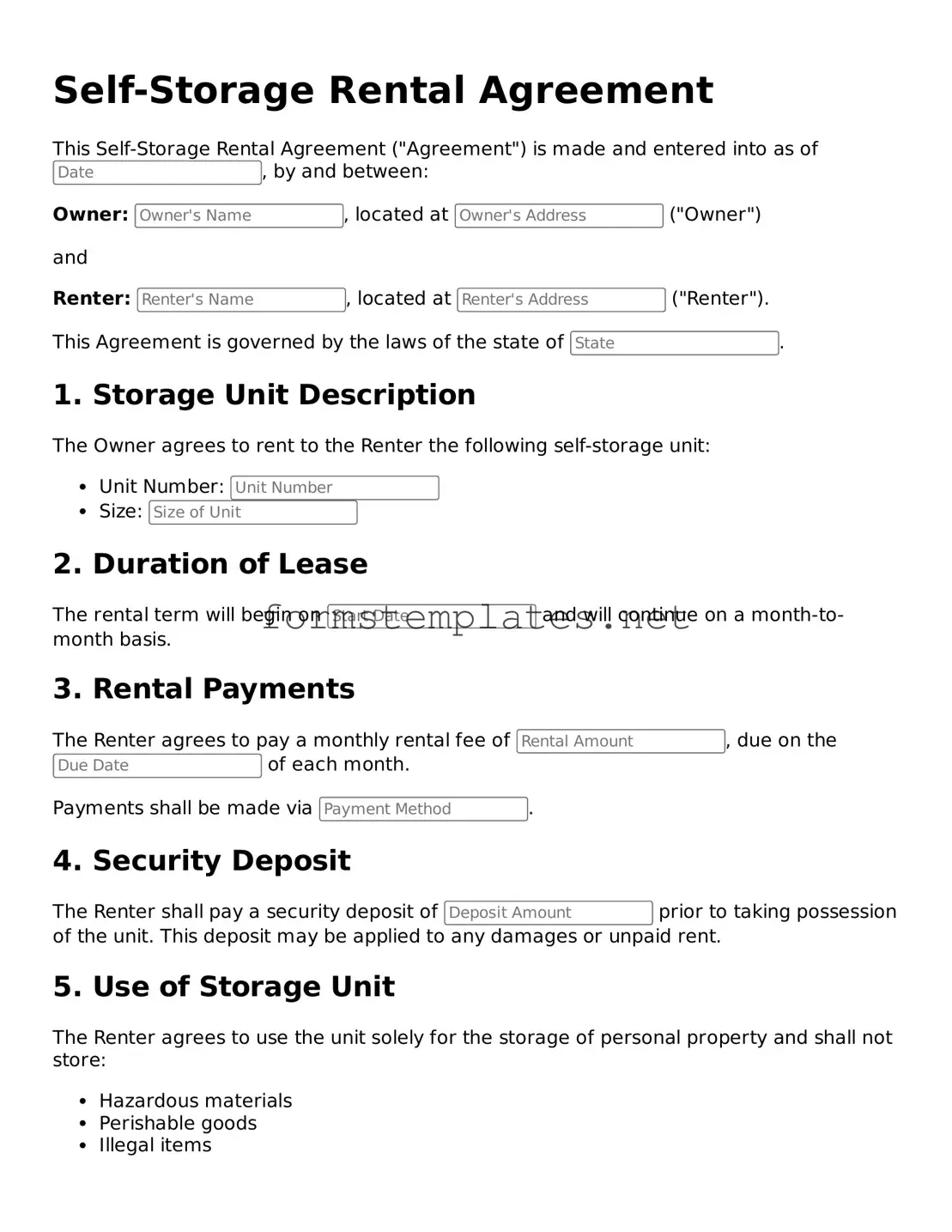Attorney-Verified Self-Storage Rental Agreement Form
The Self-Storage Rental Agreement form is a legal document that outlines the terms and conditions between a storage facility and a renter. This agreement serves as a vital tool, ensuring both parties understand their rights and responsibilities regarding the use of storage space. By clearly defining the rental terms, it helps prevent misunderstandings and protects the interests of everyone involved.
Open Editor Now
